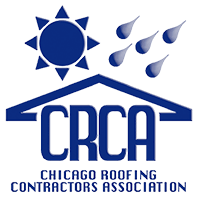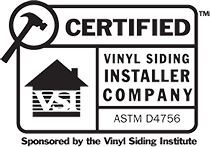Think you’ve got an emergency roof repair and need to know what to do next? You’re in the right place. This article should only take a few minutes to read and should point you in the right direction of fixing your roof emergency as soon as possible.
Even if you don’t have a roof emergency right now – it could still be a good idea to familiarize yourself with what to do, just in case.
Just like roofs, roof emergencies can come in many shapes and sizes. Diagnosing the problem quickly can be half the problem, but getting someone on site and fixing it as soon as possible should also be a priority. Some roofing emergencies you might actually be able to fix yourself, but only if you’re careful and work safely.
What is considered an emergency roof repair?
There are a number of different types of roofing emergencies. Obviously, if part of your roof has clearly blown or fallen off – this is one of the most extreme roofing emergencies and you’ll need to get it fixed as soon as possible.
Within hours or days if you can. The one thing about this type of roofing emergency is that while it is serious – it’s also easy to spot. And rare. Some other roofing problems should still be considered emergencies and might be slightly less obvious. So what are they?
One of the most common types of roofing emergencies is a leak, or especially multiple leaks. These are also serious, but they’re also less easy to spot. You might only notice when it starts raining.
You’ll still need to get your leaks looked at by a professional as soon as possible, but you can apply temporary stops or leakage fillers in the meantime. If it’s not raining, repairs might not be quite as urgent, but you should still treat them as a priority.
Leaks will often be easy to find if you follow the flow of the water in your roofing cavity or loft. Again, this will only be clear if it’s raining or has been recently (or possibly snowing). Finding a leak in dry weather can be slightly more difficult, but you can aim a hose up on your roof and follow where the leakage goes.
You can consider your roof problems an emergency if they present a hazardous risk to you or anyone else. If slates or tiles are falling off regularly, this is a dangerous risk to people’s safety and should be considered an emergency. You need to make sure they are all secured as soon as possible.
Many minor issues can become more serious if they are left to develop by themselves. While you might think your minor roof issue isn’t serious, you need to get it fixed as soon as you become aware of it, or it could become more serious and turn into an emergency.
Who should you call?
Generally, you should have an emergency roofer’s details so you can call them at any time. Often, this might be the firm that installed the roof in the first place. One important thing to remember when going back to your original roofing firm is to be careful if the emergency is a result of their poor work.
If they didn’t install the roof properly in the first place, can they be relied upon to fix it properly now?
However, if the damage or emergency are a result of extreme weather or general wear and tear in the age of an old roof, your best bet might be to go back to who first installed the roof if possible, as they will know exactly how it was constructed and what issues there might be.
If you need to find a new roofing company to fix the issue, you’ll want to make a quick decision but still not a hasty one. Make sure you hire a firm that’s local enough that they can get to your home quickly to fix your emergency.
How can your roof emergency be fixed?
Fixing your roof issue will depend on the actual problem. Leakages can be fixed relatively easily. You might even want to try doing this yourself. Even finding the exact location of the leak yourself could save your roofer time and reduce costs.
If you want to apply sealant to the roof yourself, you can do it if you’re careful – especially when working externally.
For major roof issues like parts of the roof falling or being blown off, you will obviously need professional help. Some roofs can be part-fixed or relayed, or potentially overlaid. In extreme emergencies the whole roof might need to be removed and replaced. This will obviously be costly, but it is rare.
For falling tiles and shingles, you might need to get a professional to look over the whole roof and fix them one at a time. Hopefully, only a few were loose – but this isn’t always the case.
How much might it cost?
As you can probably guess, the costs will vary a lot depending on what needs done. Fixing a leak is generally a low-cost repair job. Getting someone on-site quickly might cost you a bit more, but many leaks can be fixed relatively easily.
If you have multiple leaks, there might be a more deep-rooted problem with the membrane of your roof which could require a more costly repair. Holes or serious damage to your roof will obviously cost a lot more to repair.
How to prevent roofing emergencies 
If you take more care on your roof at all times, these roof emergency repairs will be less likely to occur. Make sure you check your roof thoroughly once a year and fix any minor issues before they become serious. Make sure you use a high-quality roofer for all your roofing work, so that poor workmanship doesn’t lead to problems.












